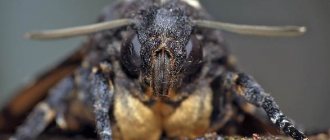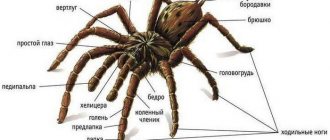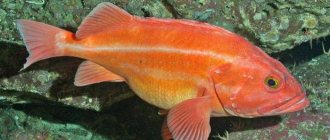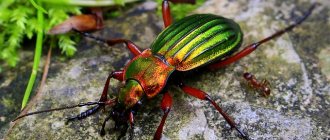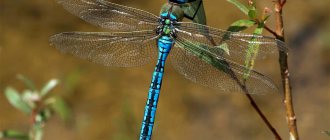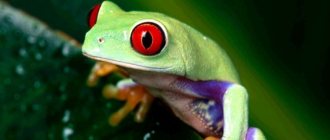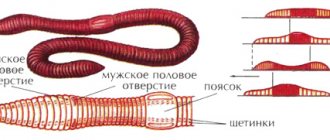Insects are a class of invertebrate arthropods that live almost anywhere on the globe, with the exception of the extreme Arctic and the tops of the highest mountains, forever covered with snow. Scientists say that where there are plants, especially flowering ones, you can always find at least one type of insect. It is almost impossible to count invertebrates of this class, but it is estimated that there are from 100 quadrillion to 10 quintillion of them on Earth. It’s hard to imagine such a number of individuals, but there really are so many insects.
Who are insects
The science of insects (entomology) and biology say that these representatives are the largest class of animals that inhabit the entire planet. Therefore, their habitat is diverse.
Blind
They can be found in the air, in forests, in water bodies, on the ground, in the desert, on ice and other surfaces. Each of them has its own distinctive features.
Spitting spider
0
Source:
As mentioned earlier, this list will feature more than one species of spider. Spiders of this species catch prey by spraying a liquid onto it, which neutralizes it by solidifying into a toxic and sticky mass upon contact. You can observe the habit of spiders swaying from side to side. They do this to wrap up their prey. Most spiders are only capable of producing silk, but Scytodes spitting spiders are an exception. Together with the silk, they release poison from their mouths, and silk strands soaked in the toxin, falling on the spider’s victim, bind it. These spiders are not dangerous to humans, do not weave large trap webs, and are unremarkable in appearance. But they still have one peculiarity - during the hunt they “spit” their prey. This may sound a little harsh, but it's accurate. This is why they got their name “spits”. Spitting spiders live in both warm tropical and temperate regions, including Russia - in human homes, where it is warm.
Signs of insects
Many beginners are interested in the main characteristics of insects, how many legs they have and other parameters.
Weevil beetle
They differ from each other in external and internal structure. But they all have common characteristics:
- presence of 6 legs,
- the presence of notches on the body,
- presence of a head with a chest and abdomen.
A schematic drawing of the external structure is below.
Ground beetles
0
Source:
Just like spiders, beetles are very ancient and well-adapted creatures for survival. There are more than 40,000 species of ground beetles alone in the world, and these insects come to our homes uninvited. The most common is the bread ground beetle. They usually cause damage to crops in fields, but are increasingly found in ordinary apartments. The bread ground beetle crawls into the apartment only if it likes the living conditions. As soon as the insect gets into the house, when darkness falls, it goes to look for food (crumbs, food left on the table, cereals). Ground beetles interfere with sleep, rustle, fall from the ceiling onto the bed or directly onto you. And if they have found food, then the next step will be their reproduction. So, if a ground beetle appears in the house, you need to take immediate action.
Types of insects photos and names
Insects are arthropods. These teams of specialists number more than 3.5 million. We present the most popular varieties in the world with photographs below in a list.
Herbivores
Herbivorous species, as their name suggests, eat plants, pollen, and plant sap. These include stick insects, cicadas, dragonflies, butterflies, aphids, bees and leaf beetles.
Philippine stick insect
Stick insects love to camouflage themselves. They can hardly be distinguished among the leaves and tree trunks.
Black Sea cicada
Small and large representatives of cicadas eat plant sap, and also communicate loudly with each other and chirp.
Amazing, orthoptera and coleoptera butterflies allow them to pollinate flowers, flying from one flower to another, drinking nectar using their proboscis.
Predatory
Predators attack other individuals or eat their larvae. Examples: these include praying mantises, ladybugs, dragonflies, swimming beetles and ground beetles.
Mantis
The praying mantis skillfully camouflages itself and waits for the moment to attack its prey, and then attacks and eats it.
Dragonfly with prey
Dragonflies, like ladybugs, fly quite quickly, hunt mosquitoes, eat their eggs and other arthropods.
Dimensions
Stick insects are one of the largest insects.
As mentioned above, there are many insects in the world that are completely different from each other. Thus, both the flea and the butterfly are representatives of the same class, but outwardly they have little in common, differing primarily in the size and shape of the body. If we talk about dimensions, the largest of the existing invertebrates is the stick insect. The length of the individual discovered in Kalimantan is over 35 cm. Previously, a stick insect was discovered whose size, including its limbs, exceeded 52 cm.
Interesting: Why don’t moths stop flying towards fire?
The fossil taxa were also quite large. The body length of Meganeura was 50 cm, while its wingspan reached 70 cm.
Among beetles, the largest representative of the species is the Hercules beetle. Males of this species reach a length of 17 cm. The titan lumberjack, which lives in South America, is not inferior to Hercules. Its body length exceeds 16 cm.
There are giants among butterflies too. The scoop tizania agrippina has such large volumes that from a distance it can easily pass for a bird. Its wingspan is 28 cm. This is a nocturnal insect, it is almost impossible to see it in the daytime. The largest diurnal butterfly is Queen Alexandra's Ornithoptera (27.3 cm).
The owner of the smallest body is the male parasitic ichneumon (0.0139 cm). Among non-parasites, only the feather wing of the tribe can boast of small size (less than 1 mm).
Classification of insects
Insects are primarily wingless and winged. The first ones never had wings. They live on the ground and eat what they can find on it.
Winged creatures, on the contrary, feed on what they can find in the air. They are further divided into two subspecies with complete and incomplete transformation.
The difference is that the former develop from an egg and only become larger in size, for example, a grasshopper, while the latter mature in cocoons, like butterflies or silkworms.
What do they eat
A grasshopper eats grass.
Different types of insects use organic substances as food, for example, tissues of animals and plants, waste products of other creatures, and remains. At the same time, insects, as a rule, are not omnivores and feed on any one type of organic matter, choosing between animal and plant origin.
Herbivores are called phytophages, those that feed on carrion are called necrophages, and plant debris on the soil surface are called detritivores. Interestingly, belonging to the group of herbivorous individuals does not mean at all that insects can feed on any parts of the plant. Among them there are those who feed only on leaves (phyllophagous), seeds (carpophagous), wood (xylophagous), and roots (rhizophagous). There are gall formers, among predators and parasites there are blood-sucking, ectoparasites and endoparasites. But this is not the final division. Everything described is classified as food specialization of the first order.
Some insects have unusual food preferences, for example, the tobacco beetle larva eats tobacco leaves and is therefore considered a dangerous pest.
The structure of insects
Any arthropod consists of a head, thorax and abdomen. Each part of the body has its own appendages that are responsible for the ability to see, hear, touch, communicate, reproduce and move.
The head contains the organs of vision, mouth and touch. There are legs and wings on the chest. And the abdomen contains the main internal organs responsible for the development of the animal.
Communication
Cicadas are known for their singing.
Insects communicate with each other using sounds, light and contact signals and pheromones:
- Sounds. Many insects are able to produce and detect sound signals. This allows them to navigate in space, find representatives of their species for mating, and even scare off enemies. Sounds are produced by systematic impacts of different parts of the body on the substrate. But, for example, cicadas have timbal membranes that help them produce high-pitched calls that resemble screams. Grasshoppers, crickets and mole crickets rub their wing covers against each other. The result is a chirping sound.
- Contact signal. Characteristic of well-organized social insects, such as bees. Having discovered a source of food, the scout bee begins to perform something like a dance, luring its companions in this simple way. Ants use antennas on their heads to transmit signals.
- Glow. Most Coleopteran insects glow in the dark. They use light signals to search for food or call a partner. At the same time, the light does not have to be white or yellow; some fireflies alternately emit light of red and green shades.
Pheromones are used for the sole purpose of attracting individuals of the opposite sex. But some insects can emit certain odors when a predator approaches, scaring them away and driving them away.
Interesting: Insects and their larvae - description, photo and video
Insect Reproduction
Insects, such as praying mantises, cockroaches and bedbugs, reproduce using droplets of sperm left on the ground.
Others mate with each other, undergo the process of copulation, as a result of which eggs appear.
Already from the eggs offspring appear.
Dark winged mosquito
0
Source:
The main harm is that they squeak and interfere with sleep! Thank God, humanity has invented many ways to get rid of mosquitoes. Mosquito nets, repellents and fumigators are a whole industry. Place fresh branches of elderberry, bird cherry, Caucasian chamomile or basil in the rooms, and place a container with tomato seedlings or geranium in a pot under the windows and on the balcony. Mosquitoes do not like the smell of these plants, so they will want to leave your home as soon as possible. According to folk superstitions, these small, disgustingly buzzing bloodsuckers - mosquitoes - are capable of bringing not only absolute harm, but also benefit, predicting the weather and future events. Clouds of mosquitoes mean good weather tomorrow. Painful mosquito bites and especially active buzzing of bloodsuckers - foretells imminent bad weather and night rain.
Life cycle
Conventionally, the life cycle of any insect is divided into three stages. In the first stage, an embryo appears and develops in an egg. In the second stage, the embryo emerges into the light and reaches the imago.
And at the last stage, the adult animal reaches maturity, lays eggs, leaving offspring, and dies.
Each insect has its own life cycle. It depends on the composition of the generation, the type of reproduction and the type of life activity.
Carpet mite
0
Source:
Scientists have found more than 1,000 different species of house ticks, and all of them cause great harm to humans, all year round. Any carpet or carpet perfectly collects dust, it accumulates in its fibers and even daily cleaning will not give a positive result - dust and mites will still remain there. Ticks, unlike most insects on this list, are very harmful to humans. The ticks themselves are capable of leaving behind their waste products in the form of feces, which contain digestive enzymes, they destroy the cells of the human body and can cause severe allergies and asthma. The damage caused by carpet mites is not limited to allergies: conjunctivitis, allergic rhinitis, atypical dermatitis and others can develop. It’s easy to deal with them - throw away all carpets and upholstered furniture once and for all!
Interesting facts about insects
May beetle in flight
A few more interesting facts for children and adults:
- The fewest living creatures in the world are mosquitoes and flies. They develop the fastest and lay eggs.
- Today, scientists are increasingly coming to the conclusion that there are more than 8 million species of insects.
- Every year new species of arthropods are identified and recorded in books.
- Spiders eat every year as much prey as the entire population of the planet weighs.
- Rare species were captured by researchers only once.
- Insects do not have a skeleton. Its role is assigned to the external chitinous exoskeleton.
- Mosquitoes can completely suck human blood. Moreover, their numbers must be enormous.
- Scientists are unable to solve the mystery of the flight of beetles, since according to all laws they should not fly.
- The fastest moving insect on earth is the dragonfly. She flies at a speed of 60 km/h.
Spiders
0
Source:
Spiders are probably one of the most common creatures with which we share our homes, and some of these arachnids will appear on this list more than once. There is a great variety of spiders in nature, more than 45,000 different species. Overall, modern spiders have spread throughout the world over the past 200 million years, which is largely responsible for their wide distribution and diversity. The spider does not do anything bad in the house, sometimes it even does good - it catches flies. Our ancestors had a huge number of signs associated with spiders, mostly positive. They say spiders are harbingers of good things to come. But, probably, if you trust signs too much, you will be completely covered in cobwebs.
×
Centipede
In damp and warm basements, in sewer niches, and attics, you can find these relatives of insects, quickly rearranging several pairs of legs. Centipedes, or more precisely centipedes
, include hundreds of species, many of which can be found at home.
They pose no danger to humans , although they can bite sensitively if disturbed
.
Their main food is rotting vegetation or other invertebrates
. If you don’t like such tenants, you should clean and ventilate technical rooms more often.
Silverfish
This representative of the bristletail appeared in the tropics. And in apartments, the silverfish chooses places that remind it of its ancestral home - with high humidity and temperature
.
She is nocturnal and does not tolerate bright light
. The silverfish does not fly, but runs quite quickly. Its appearance resembles ancient crustaceans - a spindle-shaped, flattened body, divided into segments. Feeding on sugar, flour, wood glue, paper and leather, the insect causes harm, albeit minor. Silverfish damage only becomes greater when the insect population increases greatly. Moreover, it is difficult to track this, since they are extremely secretive animals. To eliminate insects, repellents, traps and some chemicals are used.
clothes moth
0
Source:
Moths inhabit houses and are a household pest, whose caterpillars spoil fabrics by eating them and gnaw the silk upholstery of furniture. Only caterpillars cause damage to products, because adults lack gnawing type mouthparts. In the dark at night, adult moths fly towards an artificial light source. According to some data, house moth caterpillars also feed on substances of plant origin, namely grains of wheat, barley, oats, corn, flour and dry bread. House moths are widespread worldwide; this species of lepidoptera is a serious pest in human homes. They feed on clothing, carpets, blankets and upholstery, as well as fur, wool, feathers and miscellaneous items such as animal bristles used to make toothbrushes and piano fibers.
Ants
0
Source:
At different times of the year and in different regions of the country, in an apartment, and even more so in a private house, you can often find representatives of various species of ants. Very often, ants in an apartment are random guests, carried on clothes or with things. Among them there are insects of different sizes and colors. However, the only real pest in an apartment is the so-called pharaoh ant - an independent species of heat-loving small ants, which in our latitudes cannot live anywhere other than residential heated premises. These red ants in the apartment are a real problem: they are numerous, spoil food, can carry pathogens of various diseases, and besides, they are extremely difficult to remove. One colony of house ants can contain several dozen queens and up to 350 thousand workers. The reasons why red ants appear in an apartment, although not numerous, can be found in almost any home. That is why small red ants are successfully conquering more and more new areas and are likely to appear in any apartment, even the cleanest one.
Dragonfly
The dragonfly is an equally beautiful insect in nature. You can meet a dragonfly in the summer, on the shore of a reservoir. They come in different colors: black, white, blue and green.
The dragonfly has 4 wings, two of which are slightly longer; they serve as its controls, literally like a steering wheel in a car. The eyes of a dragonfly are facets, shimmer with all the colors of the rainbow and occupy almost the entire space of the head; they consist of small eyes. There are approximately 28 thousand of them!
We talked about the dragonfly’s extraordinary vision when we shared our impressions of visiting the science museum.
Interesting facts about dragonflies
- In Japan, the dragonfly used to be a sign of victory.
- The dragonfly has a surprisingly good appetite; it can eat about 40 flies in an hour.
- Dragonflies lay eggs in water. Once hatched, the larvae can live underwater for two years.
- The wings and body of a dragonfly are designed in such a way that it is not only able to withstand long migrations, but can also hover in the air, fly sideways, backwards, forwards, at any angle and in any direction.
Bee
This is one of those insects that bring invaluable benefits to humans. They are loved by many... And internationally recognized as the most hardworking insects.
The bee's body is painted in black and yellow stripes, there are wings and a proboscis, with which they collect nectar (and, with the help of special saliva, turn it into honey). Every bee has a stinger, which is located in the back of the body; it serves for protection. When a bee thrusts its sting into an enemy, the sting remains in the victim, and the bee dies.
Interesting facts about bees
- A bee can sense a flower with nectar within one kilometer.
- The world's first beekeepers were the Egyptians.
- The most dangerous species of bees lives in Australia.
- Bees have a very highly developed sense of smell. They distinguish and perceive odors 1000 times stronger than humans. They are able to smell the scent of flowers at a distance of 1 kilometer.
- In order to collect just 1 kilogram of honey, a bee needs to visit 10 million flowers, make 150,000 flights and fly 300,000 kilometers.
- In one day, one bee can collect pollen from 7,000 flowers. To get just 100 grams of honey, a bee must fly a distance of 46,000 kilometers. This is the same distance as around the Earth at the equator.
- A bee swarm can weigh up to 7-8 kg, it consists of 50-60 thousand bees, having 2-3 kg of honey in their crops. During inclement weather, bees can feed on honey reserves for 8 days.
- A honey bee flaps its wings 200 times per second. She needs to make 11,400 strokes per minute to get the characteristic buzzing sound.
- A bee has 5 eyes. Three at the top of the head and two at the front.
- Bees have many enemies and “freeloaders”, so the entrance to the hive is reliably guarded by guards who are ready to attack an uninvited guest at any moment. No bee can enter someone else's hive. Each hive has a special smell that is not detectable by humans. Each bee stores this scent in a special cavity in its body. Flying up to the entrance, the bee opens it and presents the smell to the guards as its business card or pass.
Fly
This is the insect that most often flies to visit us. The fly is black or brown with a blue or green tint. She has two large eyes, which are divided into 4 thousand facets, and small fluffy antennae that serve her to detect food. Flies taste food with the help of their paw; it is with their paw that they feel the taste and understand whether the food is edible or not. In fact, flies are very dangerous for people; they carry a bunch of infections (typhoid, anthrax, tuberculosis and much more). They can carry the infection 20-25 kilometers.
Interesting facts about flies
- The most dangerous type of fly lives in Africa, they are called “tsetse”. They carry the sleeping sickness virus, which kills tens of thousands of people and animals every year. Tsetse flies attack any moving warm object, even a car. The exception is the zebra, which the fly perceives as just a flickering of black and white stripes.
- The life of a fly is short - from 8 to 20 days, depending on the environment
- Flies live in all corners of the planet. Their number exceeds 750,000 species.
